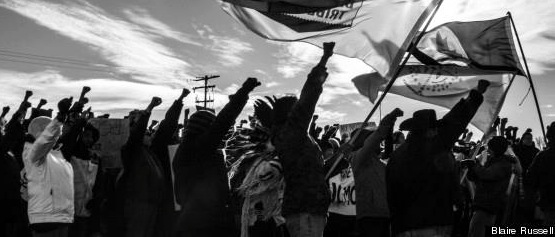Hello my fellow rabble-rousers,
My name is Meghan and I am your friendly Lynn Williams Activist Toolkit blogger. My aim is to use this space to provide you with historical context for ongoing struggles, to help celebrate victories, mourn losses and give you the tools you need to take action. So let’s get started!
We are now over a week into Idle No More’s Sovereignty Summer and all over the continent indigenous people (and their settler allies) are gearing up and taking action. The 4th annual Tar Sands Healing walk has just concluded and on the newly updated Sovereignty Summer website you can learn more about the Idle No More movement and find out about upcoming actions and how you can participate.
In solidarity with Sovereignty Summer we here at the Lynn Williams Activist Toolkit have dedicated this first round of updates to filling in the background information that will help you be a more effective as an activist working on Indigenous rights issues. Having a good working knowledge of the events and legislation that have served to define the relationship between Indigenous communities and the Canadian settler state will be invaluable as you wade into the fray.
First off, we have a piece about the Two Row Wampum that will with any luck explain why you may have seen a bunch of people in your local Idle No More marches carrying a large banner that consisted of a white field and two striking purple stripes running parallel to each other.
Next up is the Indian Act. Written in 1876, this nasty piece of legislation that has been continuously amended over the last 137 years, defines the relationship between indigenous people and the federal government. If you can scroll through your mental roll of the lowest points inCanadian colonialism there is a better than odds on chance that the Indian Act was implicated in one way or the other.
And last in our quick and dirty history of indigenous v. settler relations we have the 1969 White Paper, commissioned by Pierre Elliot Trudeau and authored by Jean Chrétien, the then Minister of Indian Affairs.
Beyond our quick trip through the a little bit of the history and context that informs The Idle No More movement we have two very different How to Guide entries to help you in your quests to a) argue about labour rights more effectively with the neo cons of your acquaintance, and b) to experiment with indigenous permaculture in your garden.
And last, but not least, we have a 3-minute action for you. Sign this petition to demand that the EU tighten up its patent laws to keep Monsanto et al. from monopolizing the global food supply.
Next week we will continue our exploration of the indigenous rights struggle and be taking a look at surveillance and the security state.
Please feel free to contact me if there are anything topics you would like me to tackle in future Toolkit updates!
NB. I’ll be posting on Mondays from now on. Presumably in upcoming weeks Toronto won’t be mid flashflooded when I go to post!




